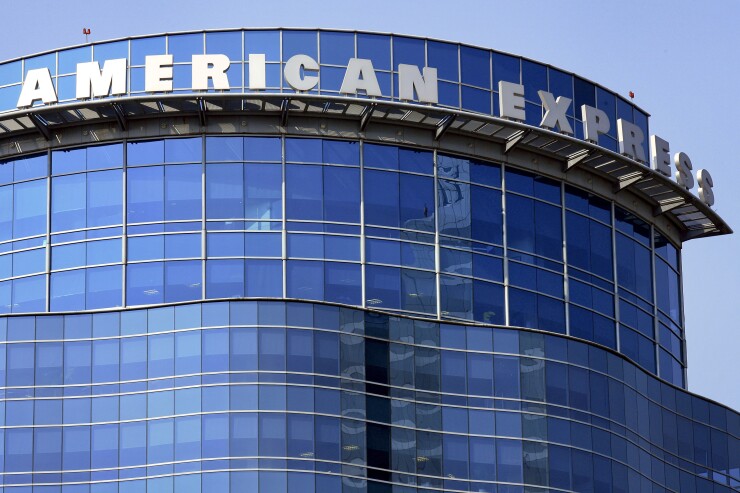Even with an economy that has slowed to a "moderate" pace, American Express says U.S. consumers' spending trends remained solid and, in the case of Amex cardholders, they are willing to pay fees for cards that come with the right features.
In delivering 2019 second-quarter total income of $1.8 billion, a 9% increase from $1.6 billion a year earlier, Amex credited its strategy to add more digital technology to its toolbox to increase its presence with merchants and cardholders.
Card spending was up 7% for the quarter, fueled mostly by consumers.
"We continue to enhance benefits and services we offer and that helped us add 2.9 million new proprietary cards this quarter," Amex CEO Stephen J. Squeri said Friday during the earnings conference call.

"Nearly 70% of those new customer cards we acquired carry an annual fee — a strong sign that card members appreciate and are willing to pay for premium value," Squeri said.
With revenue reported at $10.8 billion for the quarter, an 8% increase from the previous year, Amex delivered 8% or better growth for the eighth straight quarter. As much as anything, that trend puts the misfires of the
Contrary to what some competitors may try to do with their card fees and value-adds, American Express has a comfort zone in following its decades-long strategy.
"As far as card fees go, it is all about adding value to the products … we take very deliberate steps to make sure we are looking at and refreshing these products on a very proactive basis," Squeri said. "It is how our model has been for decades and we will continue to invest in those value propositions, so that we can continue to generate card fees."
American Express announced in May that it would
"If you look at the last five acquisitions we have made, you may feel they are consumer-driven, but they really are all about embedding ourselves more in our customers' digital lives, and those customers are both consumers and small businesses," Squeri said.
American Express has taken a "building blocks" approach to digital technology acquisitions, rather than always seeking additions to customer databases or more prospects, Squeri said.
Along the same lines, American Express intends to stick with its philosophy of developing a hybrid cloud strategy, rather a public cloud that competitors are embracing through investments.
"I'm really comfortable with where we are," Squeri said of Amex's technology capabilities. "From an economic perspective, the reason we have a hybrid cloud strategy is that we believe that, in an ongoing basis, we have better economics by running our private cloud."
Public clouds vary so much that it benefits Amex to operate a private cloud, Squeri added.
"It enables us to not have the fixed cost investment of a public cloud," he said. "I don't feel like we are falling behind on this at all, and we might have been a little bit ahead with the hybrid strategy we deployed."
American Express began
On the international front, Amex officials expressed confidence that small-business growth would continue and that the company could overcome any setbacks from European Union or Australian interchange fee caps that would prompt some banks to drop co-brand relationships with Amex.
In the international small-business segment, American Express enjoyed six quarters of 20% growth, but saw that dip in this year's second quarter to 17%.
"The 20% was from a smaller base, and I am pretty happy with where we are with17%, and we continue to invest in the value propositions and sales organizations of international small businesses," Squeri added. "Our absolute numbers are actually getting bigger and our performance in international SME growth had been really outstanding."





